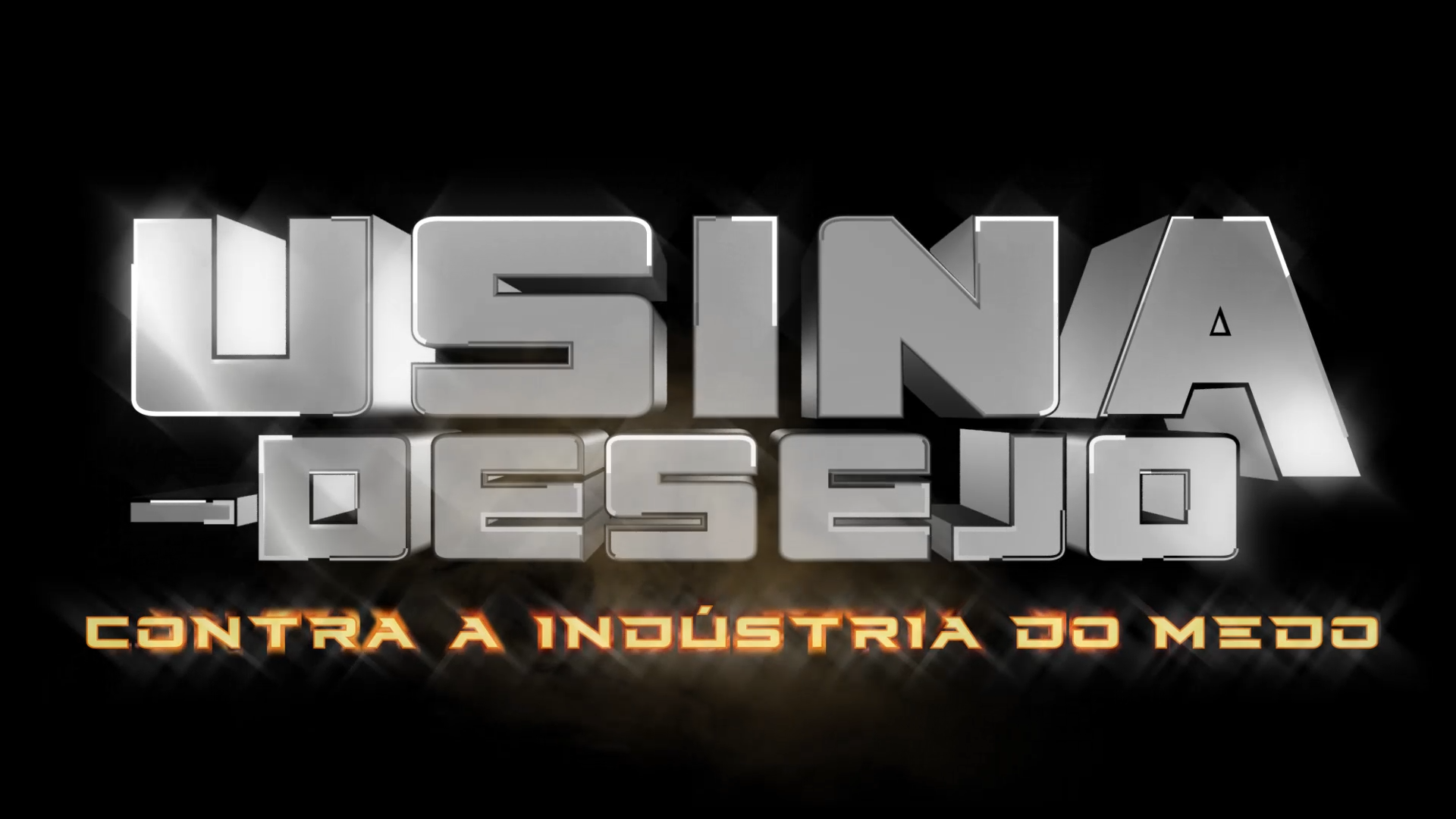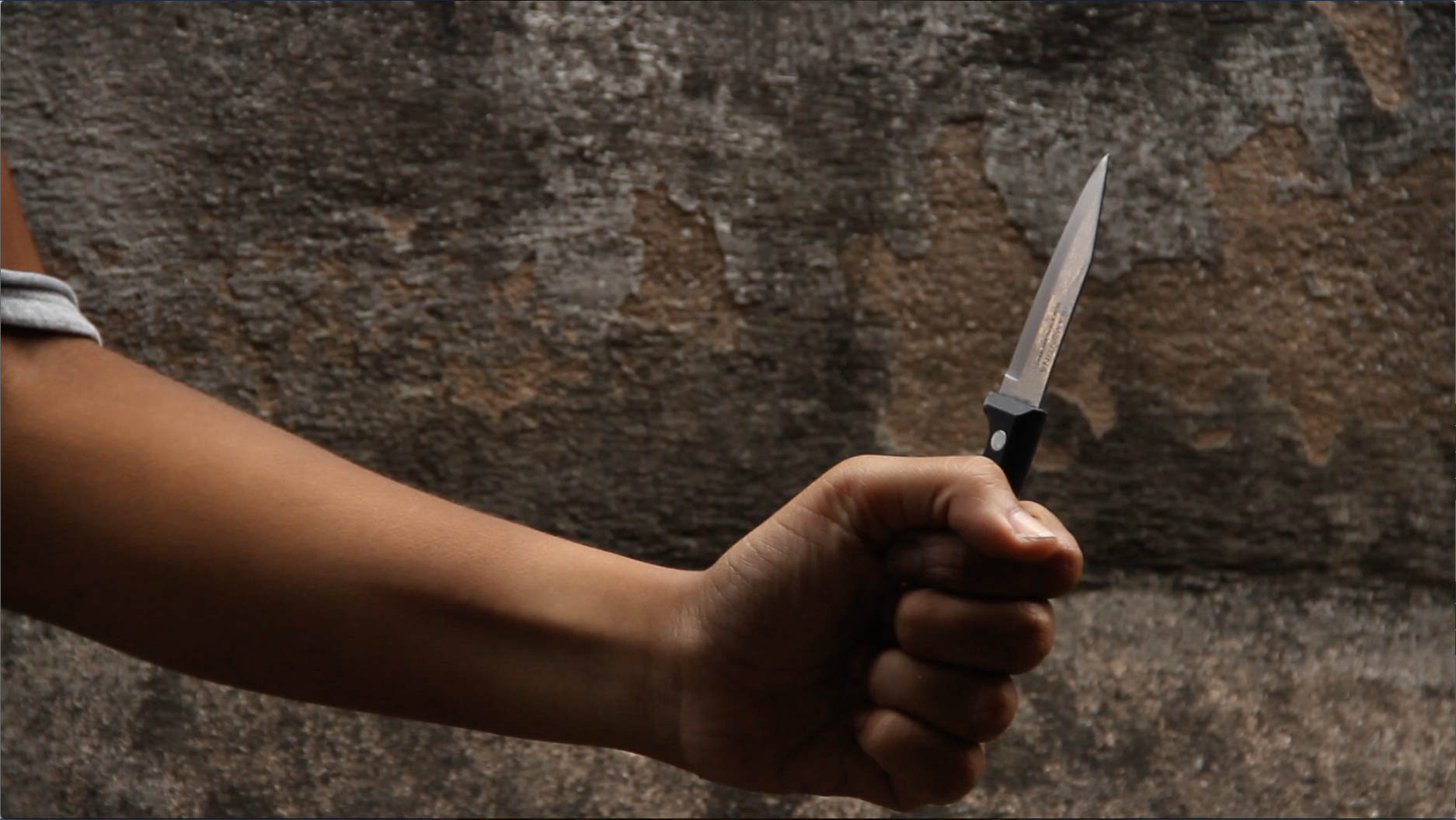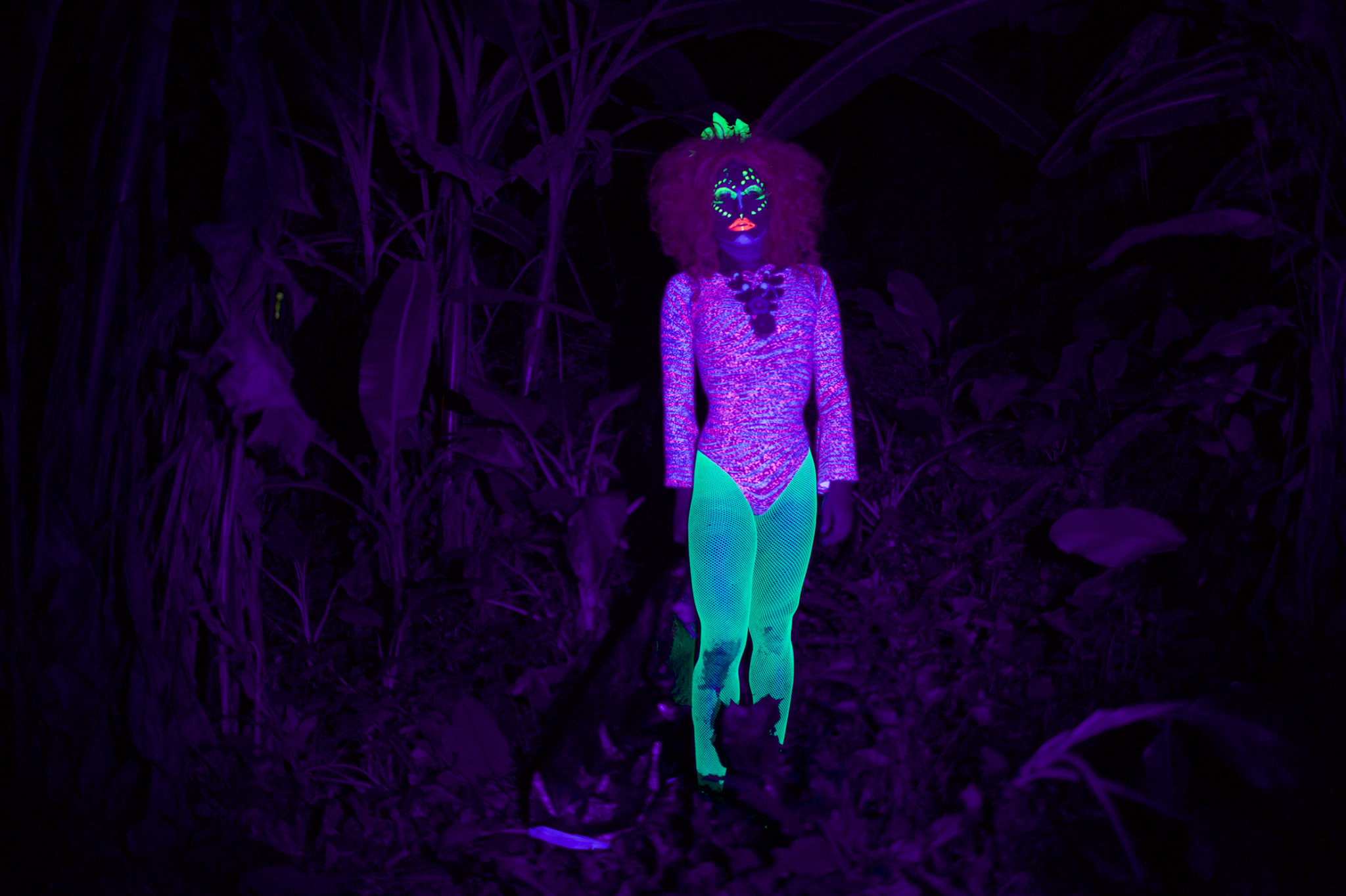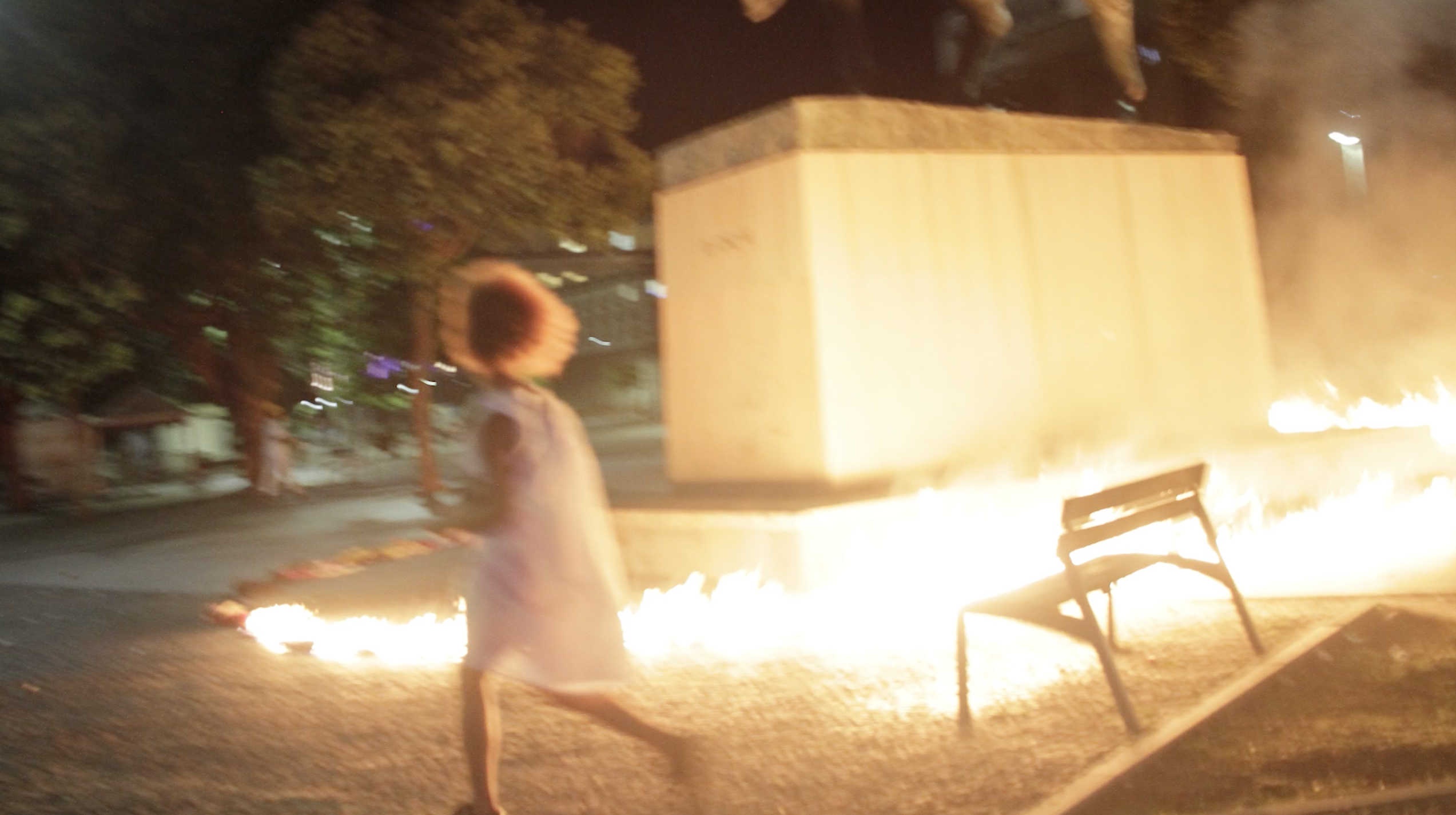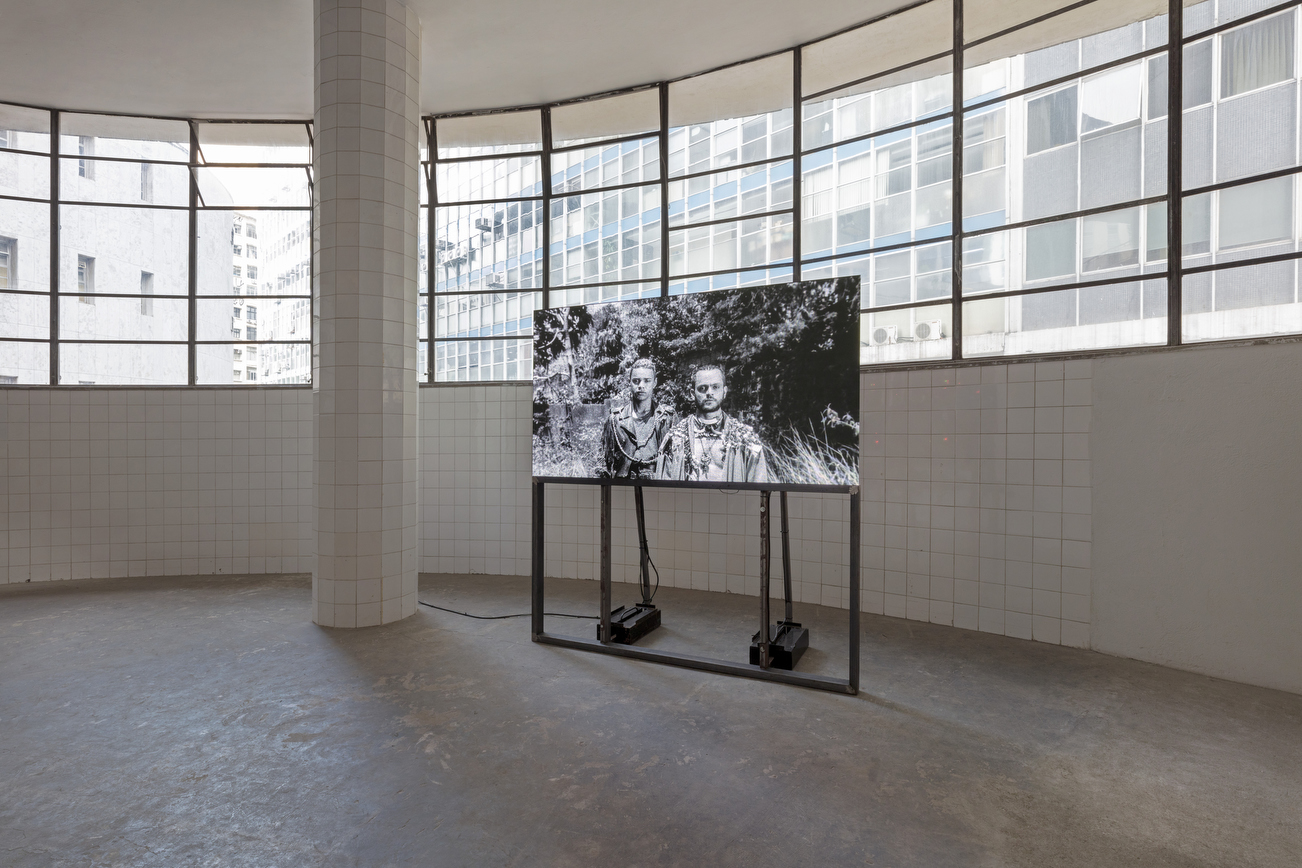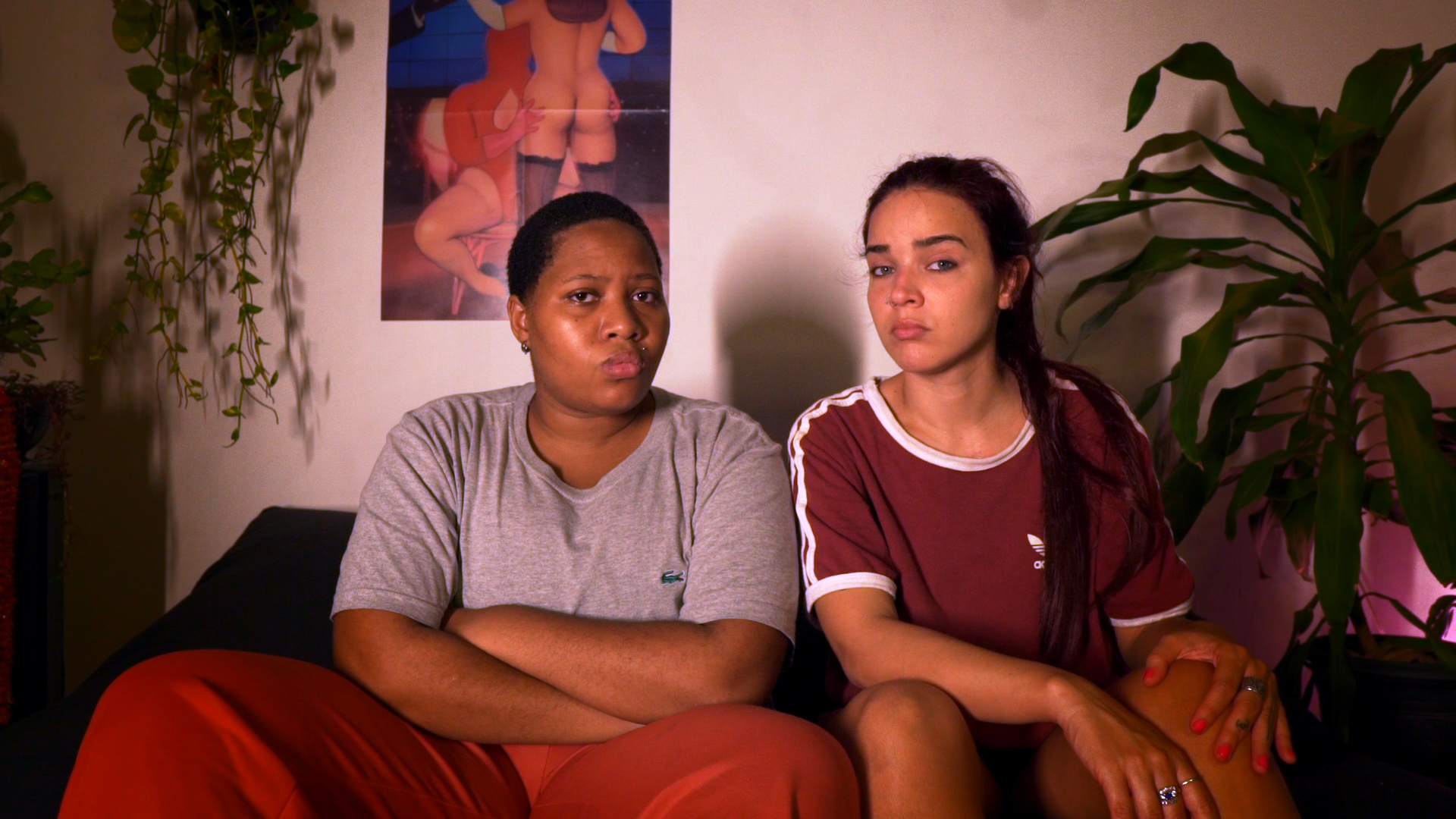

Challenge the colonial perspective through audiovisual works. This is one of the intentions that drive film production at Anarca Filmes. The collective based in Rio de Janeiro is one of the participants in the second edition of Pivô Satellite, integrating the virtual exhibition O Assombro dos Trópicos [The Haunting of the Tropics], curated by Victor Gorgulho. For the project, the collective prepared two programs with some of its most important films, and also produced a new work, the interactive film Usina-Desejo contra a Indústria do Medo [Desire-Plant against the Fear Industry]. In the following interview, Amanda Seraphico, Clarissa Ribeiro and Lorran Dias talk about Anarca Filmes’s project for Pivô’s digital platform and the collective’s trajectory, in its endless disposition for experimentation.
Leo Felipe: Anarca Filmes’ films undeniably show an anarchic aesthetic, but what about the process? How does anarchist ethics manifest itself in the different stages of the collective’s work?
Anarca Filmes: When Anarca Filmes emerged, we were heavily influenced by the political demonstrations that took place in Rio de Janeiro in 2013, at a time of more intense contact with identity issues and closer proximity with political theories, so we felt the need to organize ourselves politically in relation to the hierarchies that structure the film industry. Thus, the name we chose alludes to the perspectives and behaviors of some leftist organizations in relation to the hierarchies of society. We are inspired by the “do it yourself” anarchist punk philosophy, and we consume many tutorials from people who share knowledge for free on the internet, free or pirate software to build our aesthetics without limiting ourselves to the search for a sanitized image, always following the catchphrase “better done than perfect”. We use images downloaded for free and sounds from databases on the internet such as freesounds and we reorganize sounds and images in other ways; we also share our content for free because we believe that we can work on the logic of abundance and not of scarcity, which is the basis of the capitalist system. Our intention is to create an anarchic universe of image production, which involves a different way of directing a film, a different way of shooting or assembling images and different ways of distributing these images, whether on the internet or at spaces that are not necessarily movie theaters. We always work with other artists, either in person or online, and we have different references, regardless of how important they are in the historiography of cinema and the arts. Despite performing a few well-defined tasks at the set, there is no verticality in the relationships because the professionals who do the most technical jobs also make their aesthetic decisions. We reverse the industry chain, we are interested not only in products but also in processes. The director is not the leader of the film, but a mediator of knowledge. This is anarchizing the hegemony of cinema. The anarchy of Anarca Filmes has a lot to do with sharing, with a desire for everyone to participate, to enter the film process and exercise their autonomy. Interactivity is anarchic in that sense. It also has to do with being open to processes, thinking about the script or the shooting schedule not as rigid structures, but as something changeable, open to interference and possibilities, not controlling.
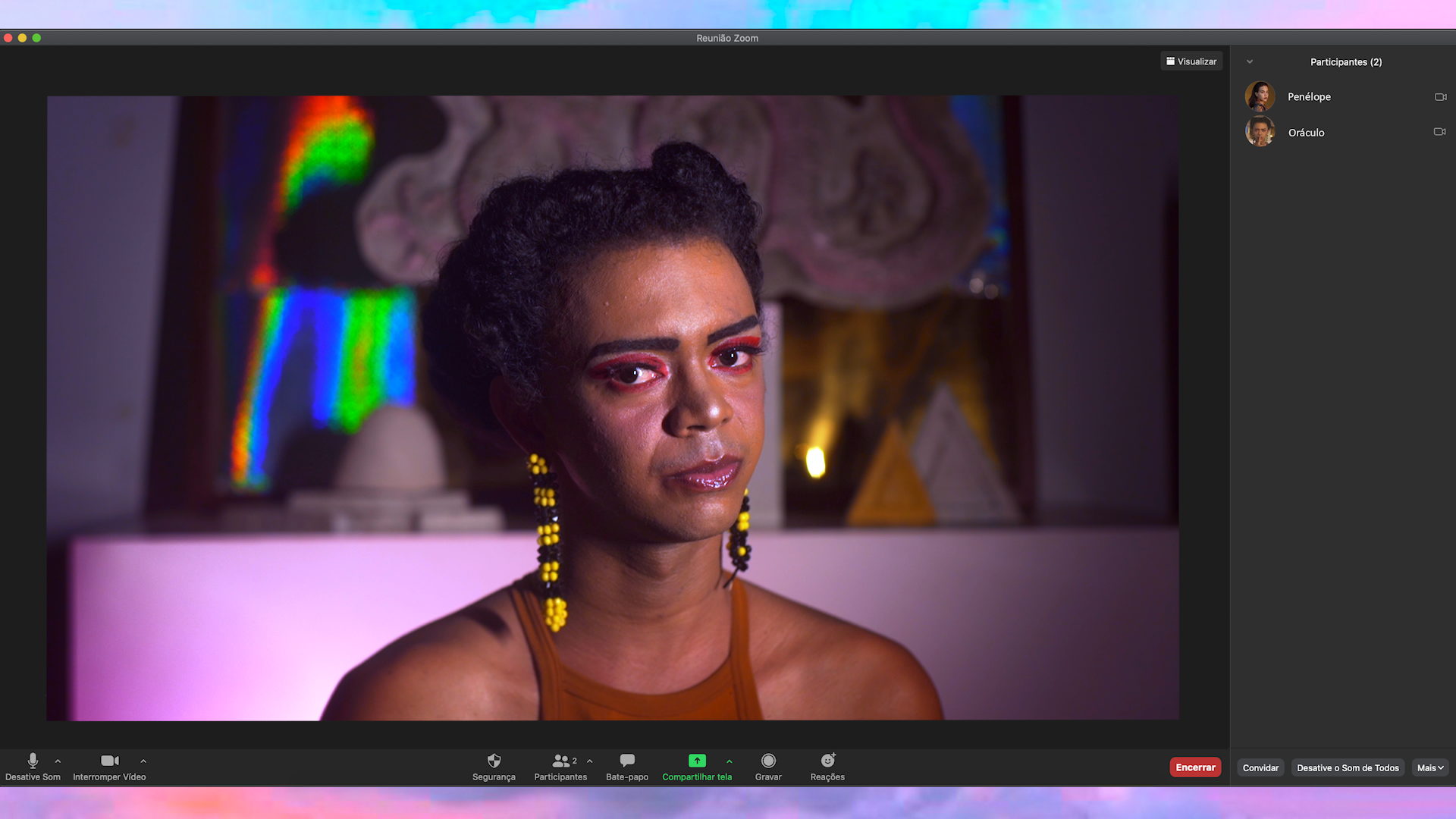
LF: What is Usina-Desejo contra a Indústria do Medo, made especially for Pivô Satellite, about? I would also like you to talk about the possibility of interactivity that arises with the digital platform. What kind of interaction is offered by 21st-century cinema?
AF: Usina-Desejo contra a Indústria do Medo is a film about the internet, it emerges from thoughts about expanded cinema, about web-specific cinema and about how filmmaking has changed over the decades. It was made as a response to an online exhibition invitation and this specific context allowed us to materialize an old wish to make a film that reached beyond a traditional exhibition room. The pandemic context led us to consume much more online content, festivals, shows, YouTube channels. This context is very impregnated in the film, this is where its atmosphere comes from. The intensification and hybridization of our real and virtual relationships. This intensification carries within it a projection of our desires, our fears, our anger. Interactivity allows people to feel part of the subject, to feel that they can choose their path within the film because they are sharing this pandemic context with us and perhaps sharing similar issues. Interactivity also comes from the relationship with technology, from the fact that the viewer is not only a consumer of images but also a selector and producer of content – demonstrated, for instance, by the massive increase in streaming platforms and social network uses.
This participation has always existed in some way, but now it has become increasingly more obvious. The interactive film brings the choice to the viewers’ state of consciousness and gives them the power to decide. It takes another step forward in the realm of experimental cinema, which has always relied heavily on the viewers’ agency, with an unspoken invitation that feels like this: “come and immerse yourself in our world and you will not regret it”. The interactivity that we are proposing also arises from technological advances that enable the production of an online film with web programming and gifs, which is also a specific language of the internet. This film deals with the difficulties and the ways that we manage to work with the production and preservation of images today. And how this is built by people who are inserted in a market that is often exclusive and, because of this exclusion, they often need to create other ways to use images or to find work with images. Thus, the internet becomes a possibility nowadays, which a few decades ago did not exist. A possibility not only of reach but also of simultaneity with other spaces. This space-time fusion allows new structures to emerge within the insecurity that permeates the work in the Brazilian audiovisual market. It is very interesting when you, as a spectator watching the film, become aware of your relationship with this market. The possibility to choose among 3 different endings also speaks of the excess of possibilities in the virtual world.
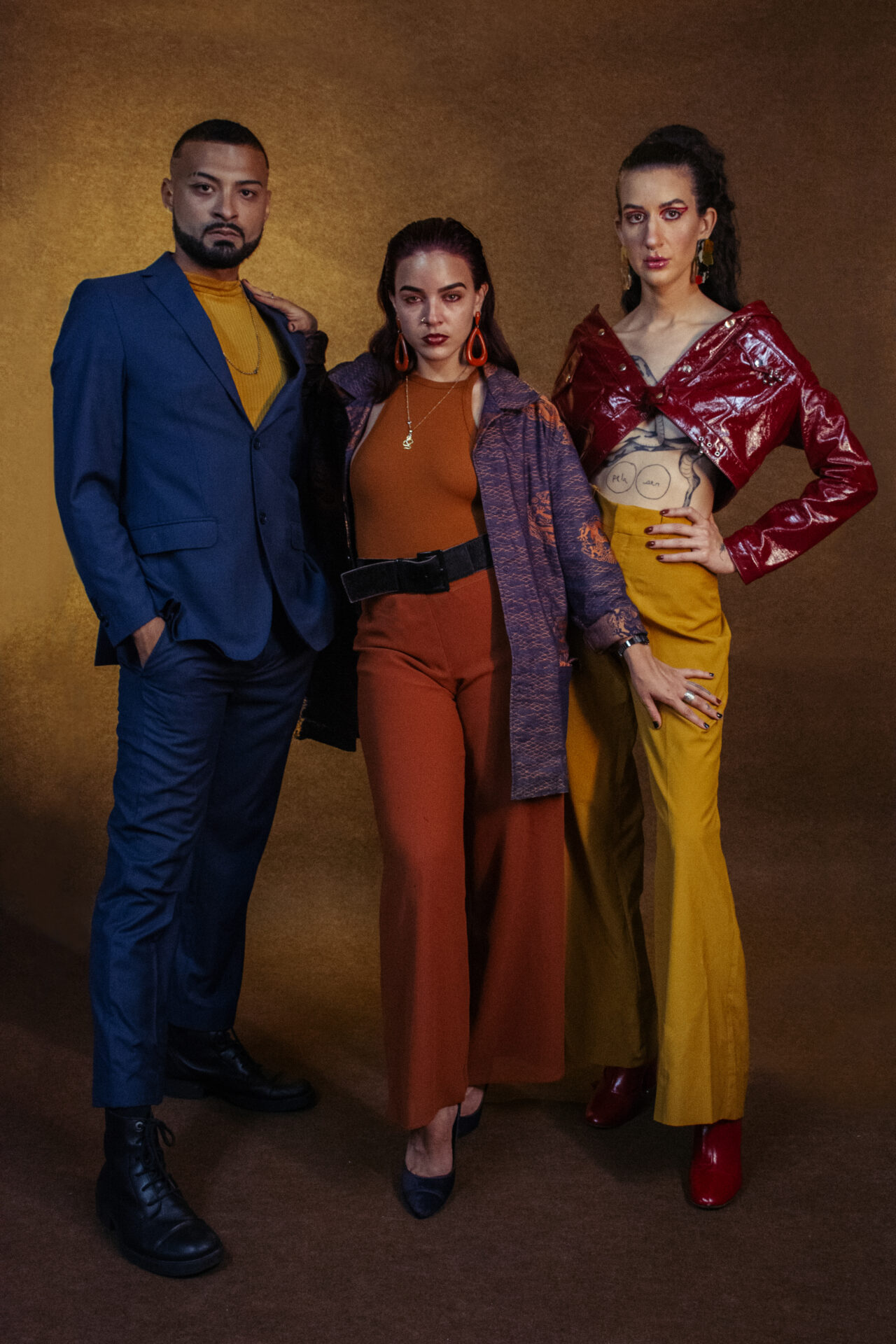
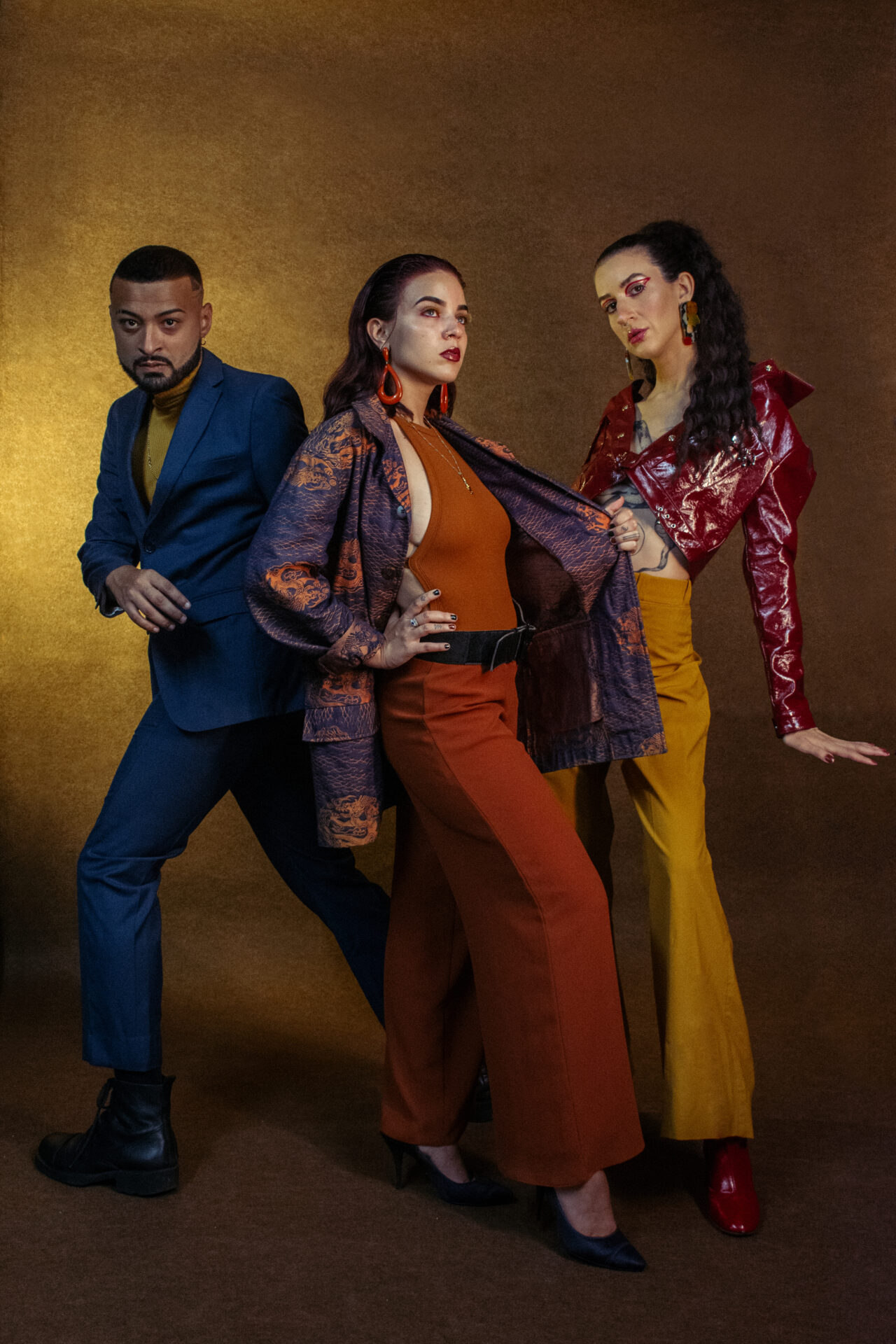
LF: The program’s first video session, Terríveis, shows works made in 2018, during the Projeto ANTI de Residência Fílmica Antifascista. The second session, Tapete Vermelho, exhibits the group’s main films, directed by different members. How does the collective organize itself around each member’s personal poetics?
AF: In multiple, organic ways and without ready-made formulas because we believe in Anarca Filmes as a proposition, a catalyst for initiatives. We have already done everything from collaborative work to individual works. For a while, Anarca Filmes manifested itself in a way in which each member contributed to the group, but over time we have experimented with modes of production that hybridize the poetics and aesthetics through political processes of communion, such as film residencies, that become collective learning spaces with courses, film clubs and meetings where contexts and circumstances emerge and generate films. In general, Anarca Filmes is a powerhouse of desires that mutually supports each person’s dreams and also a space for the coexistence of difference. More than an audiovisual production group, or a collective of artists, we see ourselves as a proposition of collectivities and reasons to be together. Our desire is to manage more living spaces in order to propose that more people coexist and show themselves in their particularities through filmmaking as relational devices. We throw this idea at people and they start asking themselves questions: what if I made a film? It is very beautiful because that way we reach out to various artists who are not from the film industry, and people who are not artists as well and encourage them to make films. And then we create a network to share not only knowledge but also structures such as chroma-key, cameras, computers for editing, etc.
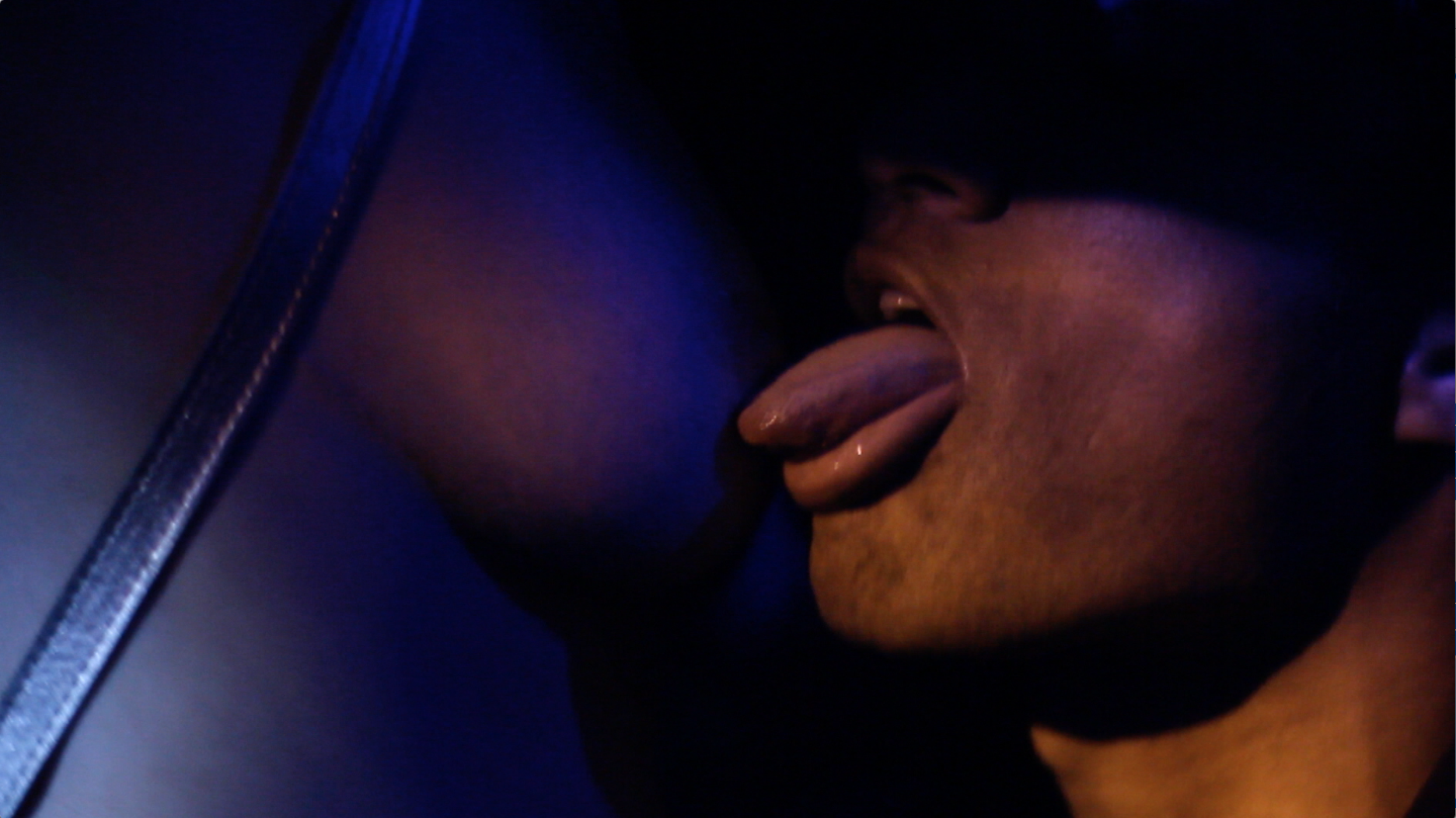
LF: In a way, Anarca Filmes emerges from an experience of nightlife, in Rio and Recife, with the recording of events, party teasers and video clips. And one of the strategies used by the collective to “liberate cinema from intellectuality” is the exhibition of films at parties and bars. What are the potentialities of this context compared to other environments where audiovisual production generally moves through?
AF: This is a method that shaped itself procedurally! Only now do we understand that we used nightlife as a production and distribution space, almost concomitantly, given that we did not find in the institutions and film festivals opportunities to show our works. The great potential of this strategy is to increase access to film sessions, promoting free or very low-priced events with free admission for transgender people (a policy we learned from the night scene in Recife). This creates a diverse audience and gives us the chance to get feedback on our work from people from different backgrounds and cultural histories almost immediately, while at festivals, for example, audiences are mostly made up of filmmakers and film students. The very atmosphere that is created during the exhibitions is more inviting for people to express their reactions to the film in contrast to the movie theater where silence predominates. It is exciting for us when we get reactions in the form of laughter or comments made loud and clear during the session; we feel that what we create is alive. When we hold our events, we build our audience, which will follow our work and go to future events, and insert our film into a specific culture, as in addition to the sessions, we work in partnership with performers and DJs, linking our work to a collective scene of the city. Another great potential for us is the possibility of independence from the formal legitimacy of film institutions so that our films can happen outside of that which is considered to be good taste by this canon. We want to detach ourselves from a certain type of intellectuality, one that is still largely influenced by a Eurocentric perspective of thought as a cold, categorical and totalizing activity. We believe in the power of current research and thought processes based on different life experiences, which carry immense wisdom and are not necessarily built upon this recognition. Through our fluid organization model and the way we perceive others and ourselves, we position ourselves politically in favor of diverse intellectualities. Anarca Filmes has been dismantling traditions of history, art history and cinema, working against the creation of the hegemonic idea that everyone should have the same references.
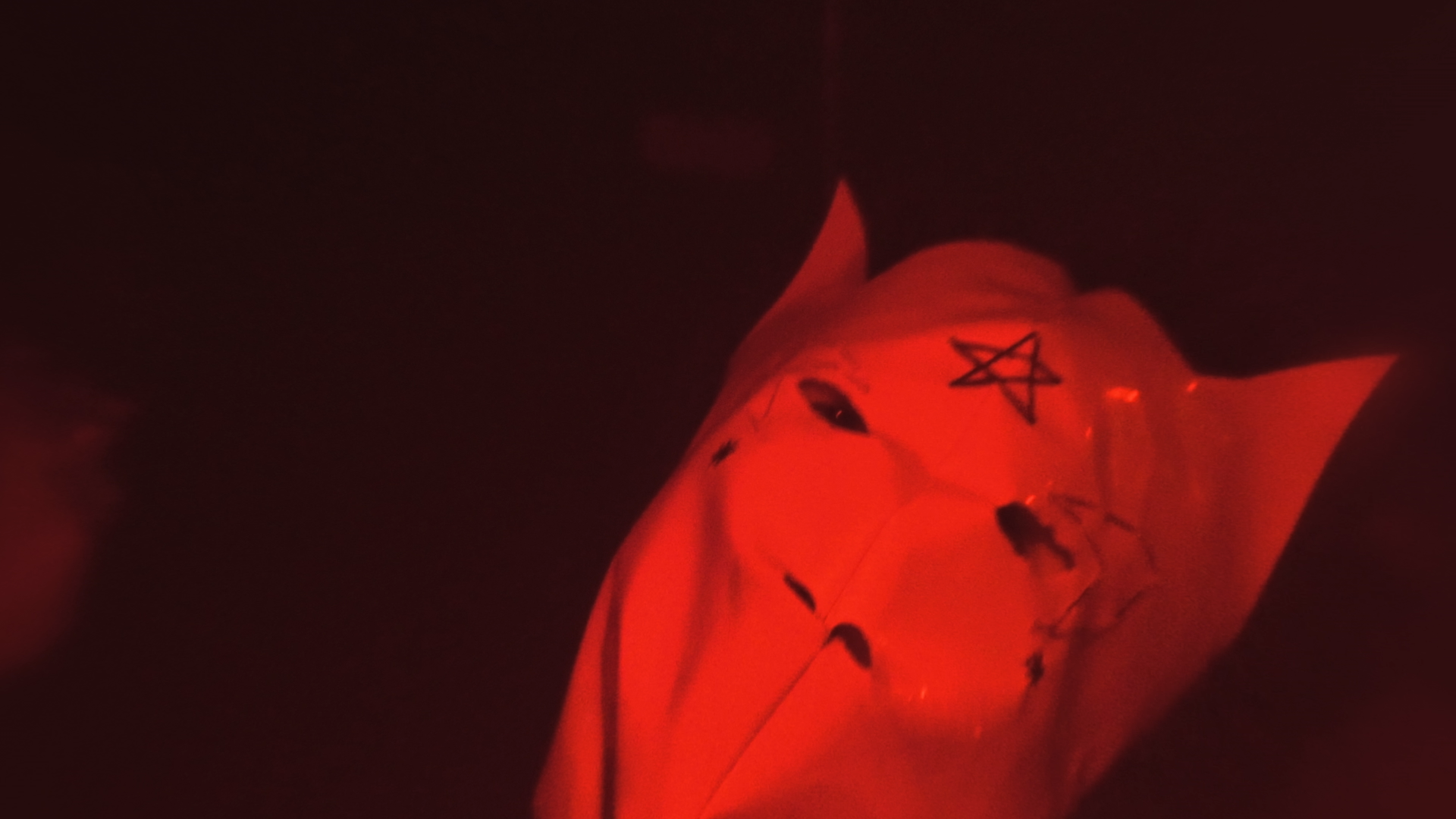
LF: There is a maxim coined by non-musician Brian Eno: “Honor thy error as a hidden intention”. You, in turn, say: “There is no plan that goes wrong”. Thus, there seems to be no concealment of intention and the error does not arise from chance but is intentionally pursued. Why is it so important for you to “turn an error into language”?
AF: We do not know if we actually pursue error, but it is certainly accepted in our creative process because there will always be a distance between what we plan and what we accomplish. We understand that between imagining and creating there is a road to be travelled where things are transformed. For this reason, many of our works are exhibited in contemporary art spaces and not only in film spaces, reflecting an appreciation, often present in the visual arts, not only of the final product but of the process as well. Modernity has many issues with identities and perfectionism, many idealizations of worlds have been expanded by colonialism and these processes work to homogenize forms and discourses. Brazil clearly lives the contradictions of difference, so for us, it doesn’t make sense to follow parameters that we don’t want to reach. Error is part of the life process and the problem always exists in the process. The point is, you can spend your whole life blaming the perpetrators of the problem, or you can go ahead and solve the problem, and move on. It is important to accept our mistakes because they are part of what we were and not necessarily what we are and will be. Perfection is a trap that limits the possibilities of life, restricts creation and creates frustration. How many times do we refrain from doing things in our lives for fear of making mistakes? There is no creation without error, it is through error that we find the paths we will follow, the methods we will use to solve it, thus promoting our personal and professional transformation. It is error that moves us forward, not what goes right. We have no way of knowing what goes right in advance, only the risk. Ensuring that everything goes as planned is like striving for the world, which is not within us, to be exactly like our ideas, which are within us. Doesn’t this obsession with political, aesthetic, poetic purism seem totalitarian? In pursuit of untouchable, irremediable beauty. Additionally, within a creative process, we have the chance to reframe the effects of these so-called mistakes and transform them into part of the language, expanding the initial plan. Often there is no chance to reshoot a scene because the opportunity is gone, time runs out, money runs out, so we have to look at what we have as something under construction, a challenge that becomes a stimulus to continue creating. We believe in the magic of cinema and its mysteries.

 Português
Português